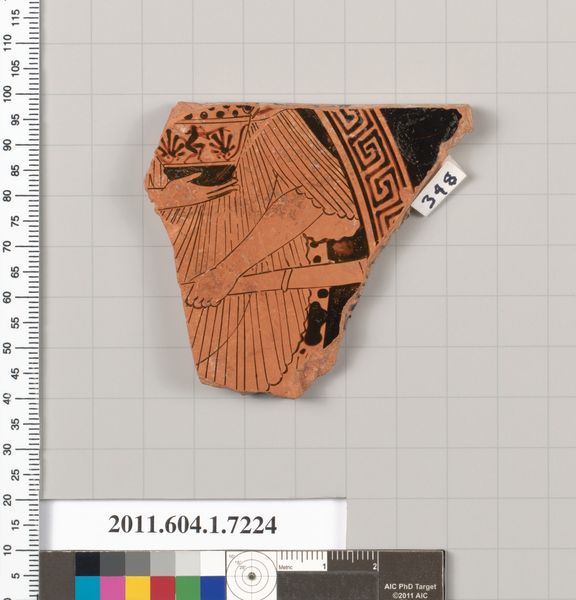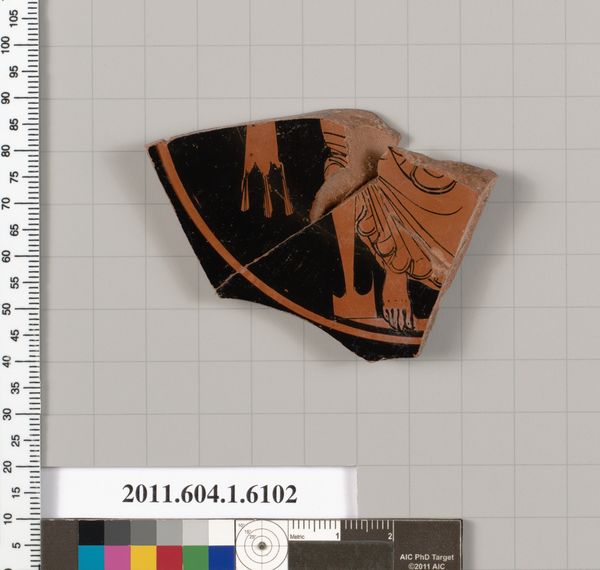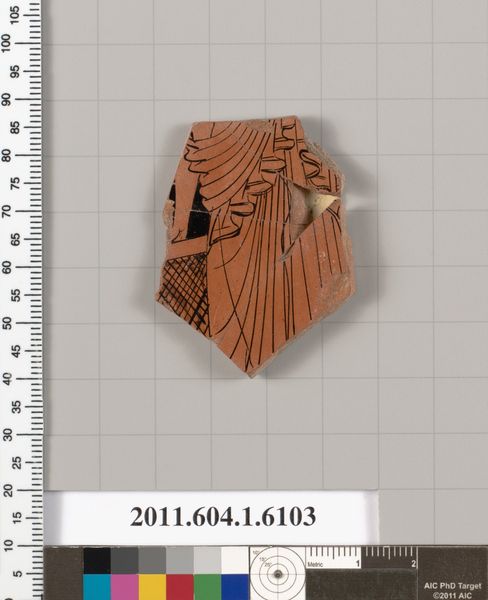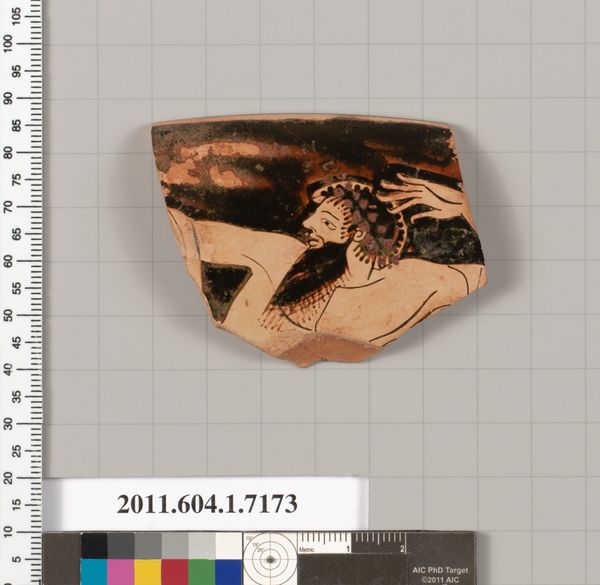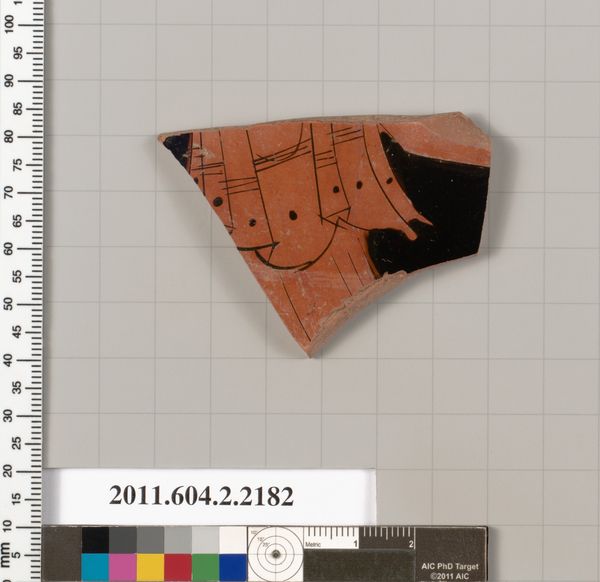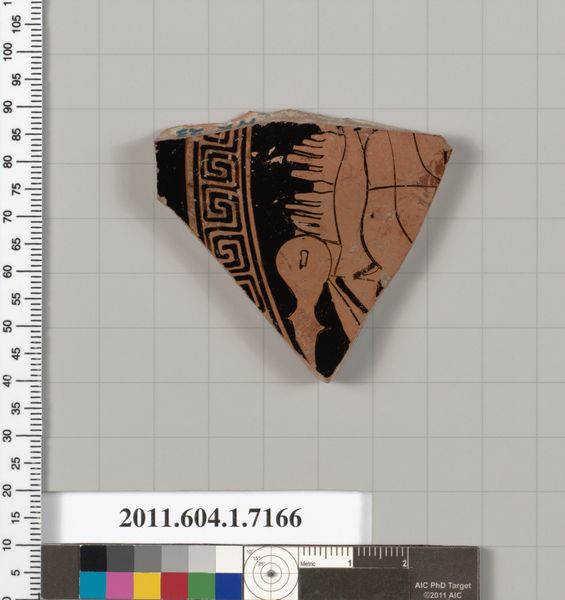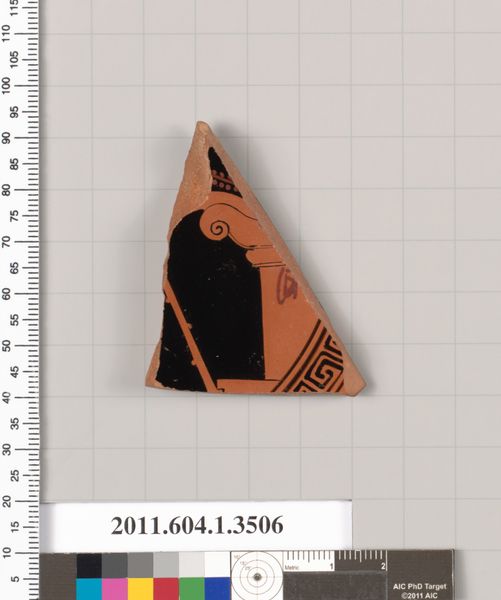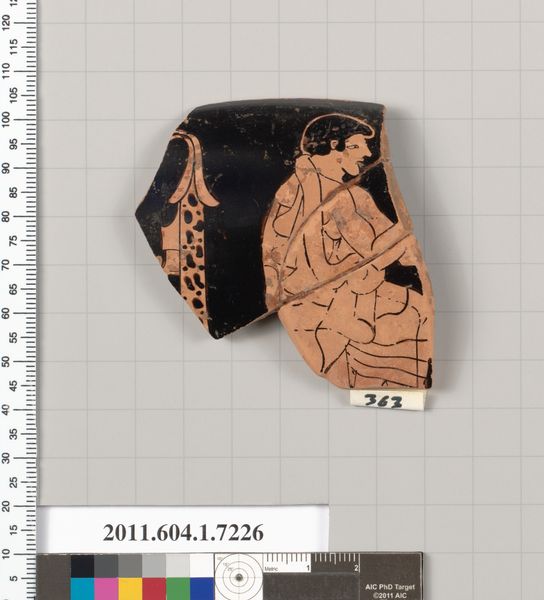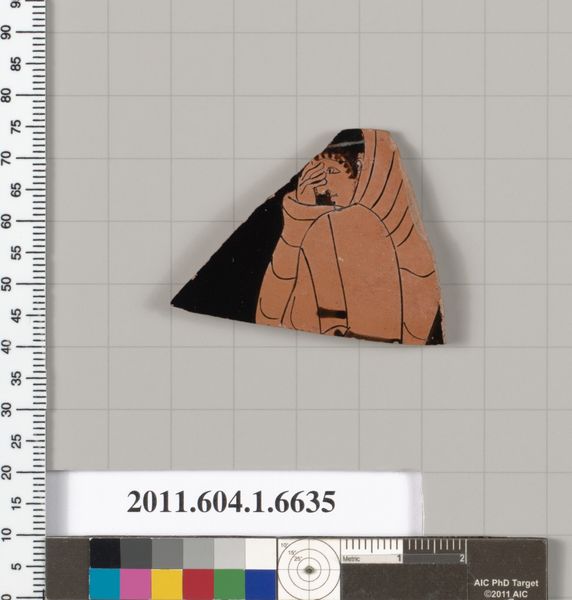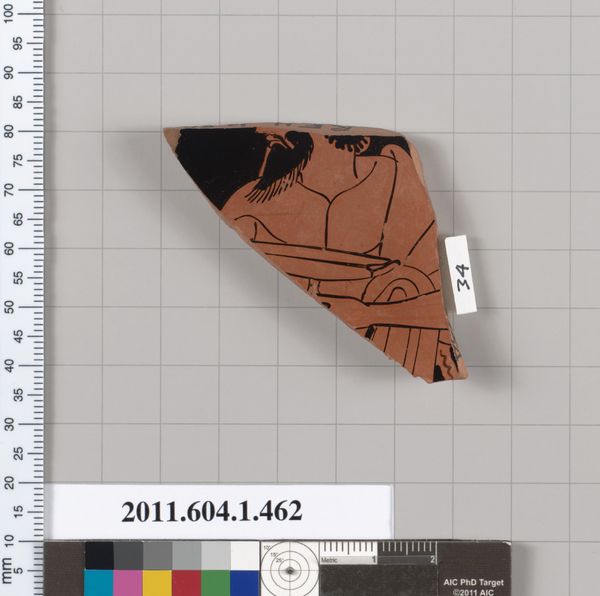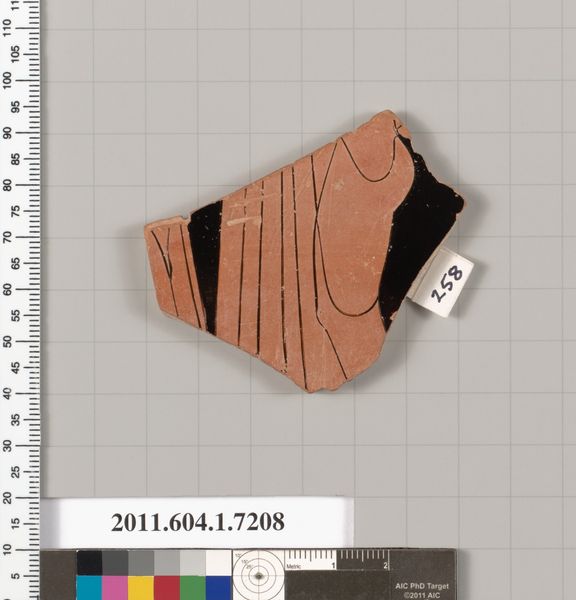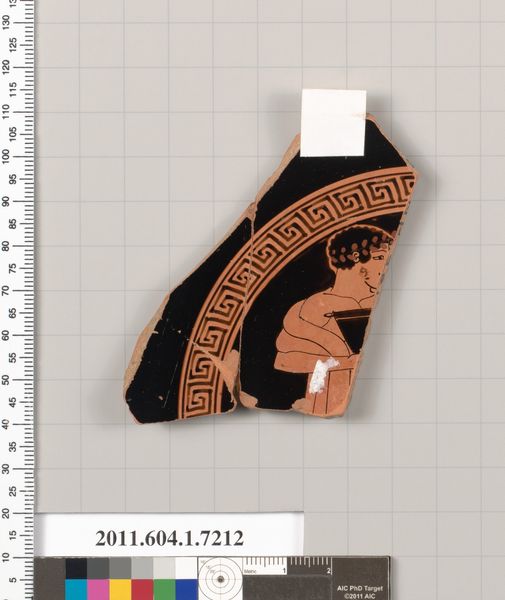
drawing, ceramic
#
drawing
#
greek-and-roman-art
#
ceramic
#
vase
#
figuration
Copyright: Public Domain
Editor: This is a fragment of a terracotta kylix, a drinking cup, from around 530 BC. It’s currently housed in the Metropolitan Museum of Art and attributed to Makron. I am really struck by the graphic quality, the black and red contrasting against the ceramic, and the lines still manage to suggest dimension. How would you interpret the imagery? Curator: Well, right away I'm drawn to the hand. Think of hands as conveyors, linking inner thoughts to outer actions. Here, the elegant fingers might suggest a delicate touch, perhaps accompanying music or poetry recitation at a symposium, for which kylixes were common. Editor: Symposiums, as in, drinking parties? Curator: Indeed! So, how might the imagery of the kylix, in these fragmented pieces, function at these symposiums, what role might it have in evoking memory, celebration, and perhaps even social cohesion within the group? What about the instrument? Do you know which one it is? Editor: It looks like a tympanon, like a small frame drum? Curator: Precisely. And think about its presence – rhythm, trance, and perhaps, connection to Dionysus. That hand may also symbolize that god. The Greeks always told stories in their paintings. And by doing that in these little vessels, they carry messages through centuries of symbol decoding, for us to see, like an ongoing, immortal conversation! Editor: I didn’t even think about it representing a God, and these everyday objects told an on-going narrative through time! So insightful, thanks!
Comments
No comments
Be the first to comment and join the conversation on the ultimate creative platform.

